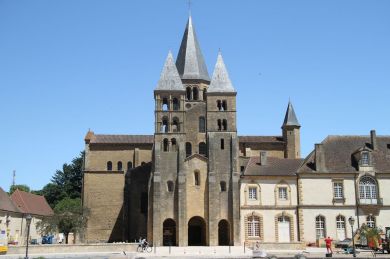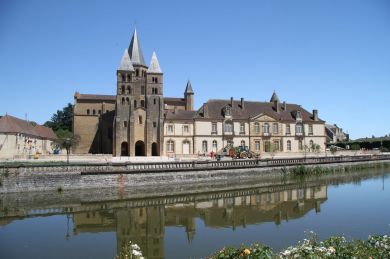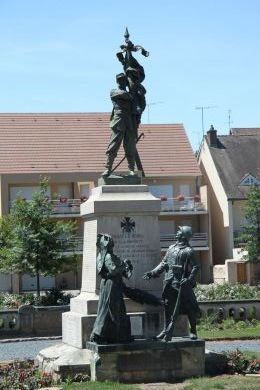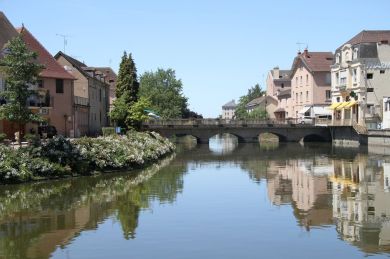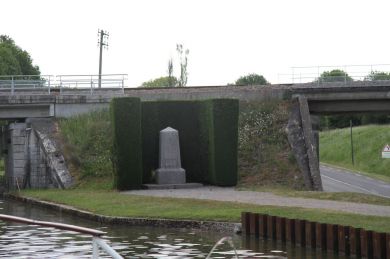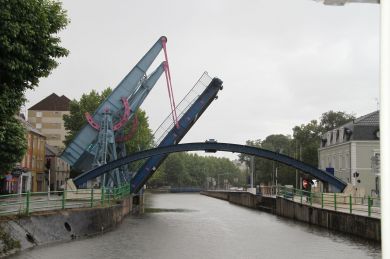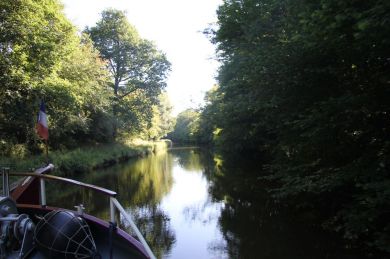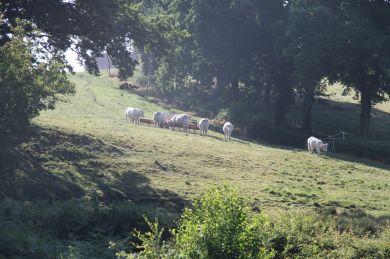Canal du Centre (Oceane side)
We have been out of decent internet range for a week, but now we are near Chalon sur Saone, we can add the information.
In Digoin we merged seamlessly onto the Canal du Centre, built at the end of the 18th Century to connect the River Loire with the River Saone. It rises quite quickly to a summit of 301 metres so locks are frequent- 61 locks in 112 kilometres. So far all of these have been automatic. For some there have been eclusiers around, at other times we have been left to operate them ourselves. We have appreciated that the bollards are close to the edge of the lock, whereas in the previous canals this year, they have been a long way back from the edge, making it difficult to attach the lines especially in the deep locks. The hard part of the Canal du Centre locks is trying to reach the pull chain to start the lock operation. All are placed in very inconvenient spots too close to the back and front gates to allow us to tie up comfortably and still reach them. We have evolved a way of doing it with the boat hook which mostly works. Even though this used to carry a great deal of commercial traffic, mostly from the coal mines along the way, the surroundings of the canal are very rural. This is also the place of origin of Charolais cattle and they are much in evidence.
Our first stop was in Paray- le- Monial at a spot where plane trees lines the canal. This was a suitable introduction to the first "Four Flower" town we have visited. Even very pretty towns before have achieved only three flowers. so this was something special and well deserved. There were flowers everywhere. The roses were spectacular. There public spaces were all carefully groomed and tended. The Basilica is outstanding, with the interior featuring honey- coloured stonework rather than the usual grey. It was started in the 11th Century with one tower almost the same as the other but with deliberate differenc es. They were built 100 years apart. Spot the difference in the photo! The town is a place of religious pilgrimage because the devotion to the Sacred Heart began here.
We always study the War Memorials in the towns we visit. In Paray-le- Monial as in many places, those who died in the Second World war are broken up into categories- died in deportation; resistance fighters; civilian dead and so on. This time there was an extra entry: those who died on August 22 1944. We asked about it at the Tourist Information Centre but the young man there did not know, so we put it aside for later research.
The answer was forthcoming the next day. We travelled to Genelard which has a Museum about the World War II demarcation line between "Free" and Occupied France. The line actually went through here, often dividing farmers' fields from their houses, children from their school and one branch of the family from another. There were documents, photos and stories about the demarcation line, the effect on everyday life and about those who subverted it by smuggling people and mail from one side to the other. We asked here about August 22 1944: this was the period when the Resistance, emboldened by allied successes on and after D Day (June 6th 1944) set about freeing French towns and cities from the Germans. Paris was freed on August 25th, Auxerre on August 24th, Dijon on September 12th. However, the actual event at Paray- le Monial was a specific action by the local townspeople to try to free deportees from a train travelling though their town. There was a train nearby carrying SS soldiers, so many people were killed.
The next day's trip took us under three canal- level bridges which needed to be raised to allow us through, in the middle of Montceau les Mines, a busy town. We had read, and been reminded by the eclsuer at the last lock, that the first was automatic, initated by pulling a cord overhanging the centre of the canal. We had met such cords before and they were easily operated, usually hanging from an arm extended out from the starboard side of the canal. We were looking out for such a structure but could not see one then remembered a gantry over the canal 400 metres back with something dangling from it but so high that surely it was not what we were looking for. Still, nothing else was in sight and the canal lights were red, indicating that we could not proceed, so we backed up to it. There was no way Penny could reach it. In the end David had to climb on the roof and a ladder to be able to reach and pull the chain. After this there was a long delay and we were still wondering if this was in fact the trigger for the bridge. After many minutes, we were relieved to see the boom gates go down to stop the traffic and then the bridge started rising, reminiscent of the Spit Bridge. We passed under it uneventfully to see another bridge opening in front of us. This was controlled by a bridge keeper. The third bridge was a pedestrian bridge and the whole span lifted horizontally to allow us through.
The rest of the rise to the top of the canal was uneventful so we stopped at Montchanin to savour the completion of the first half of the Canal du Centre. This was actually one of the dullest towns we have been in and baguettes were not readily available, but David had the chance to do some significant work on our back roof, his current major project.
Pictures show the Paray Basilica, Paray War Memorial, Demarcation Line memorial by the Canal, Montceau Bridges, general canal and the famous Charolais cattle grazing by the canal as we passed.
Best Regards,
Penny & Dave
